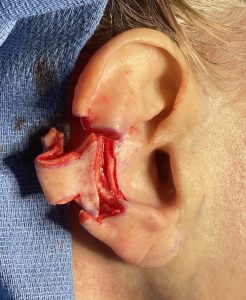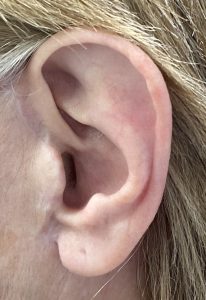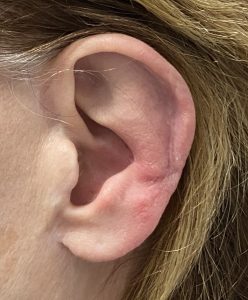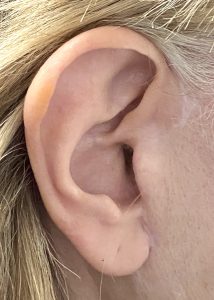Background: The ear occupies the side of the head and is a frequently overlooked facial feature given its location. It only becomes aesthetically relevant when some feature about it makes it stand out. The most common aesthetic ears deformity is protrusion, the ear sticks out too far from the side of the head with an increased auriculocephalic angle. This accounts for one of the commonly requested ear reshaping procedures of the setback otoplasty.
Another feature that can make an ear unattractive is if it is too big. Most commonly it is the earlobe at fault since this is the only part of the ear that can elongate with age due to lack of any cartilage support. This accounts for another common aesthetic ear reshaping procedure of earlobe reductions.
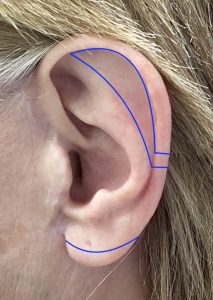
But in some macrotia patients part of the problem is the enlarged central conchal bowl. If the typical superior and inferior macrotia reduction is done, while the ear will be vertically smaller, the conceal will look abnormally enlarged and unusual in appearance. This requires a different form of macrotia surgery.
Case Study: This female had always been bothered by her large ears and never wore her hair pulled back. Her vertical ears lengths were 75mms with a very large concha.
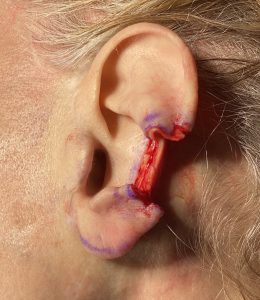
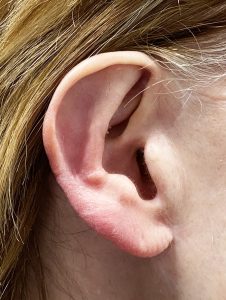
A central ear wedge resection approach is typically associated with the treatment for skin cancer. The apprehension for using it in aesthetic ear surgery is how well the scar does across the antihelical and helical rims. While the more traditional scaphal flap has a scar line across the helical rim as well, the central wedge method crosses the antihelical rim as well. The resultant scar is acceptable and the reduction in the appearance of the concha is apparent. The real issue to be aware of when using this central reduction technique is that the upper ear can inadvertently become pulled over a bit. This can be avoided by taking all of the inner cartilage wedge resection of the concha superiorly since this is the part of the ear that does the most movement when putting it back together.
Case Highlights:
1) While a large ear is ultimately determined by the patient’s perception a vertical height greater than 60mms in a female would be considered large.
2) Traditional vertical ear shortening (Macrotia) surgery involves a superior scaphal flap and inferior earlobe reductions.
3) When a large concha is a major reason for the large ear a central wedge reduction technique can be used with acceptable scarring across the middle of the ear.
Dr. Barry Eppley
Indianapolis, Indiana



